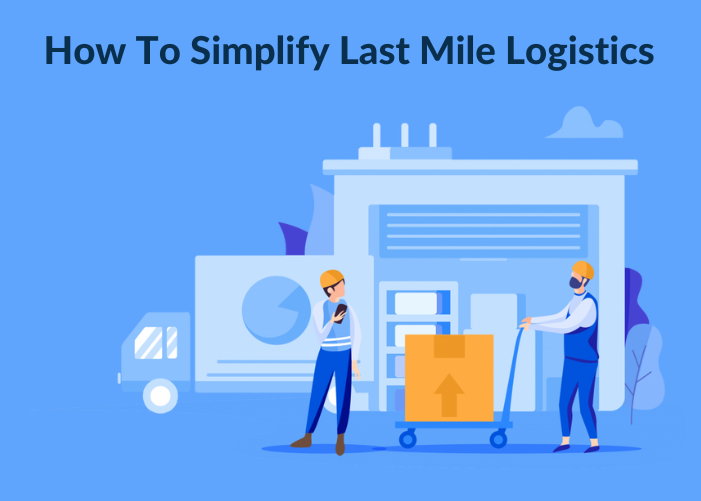Summary
Our world today is characterized by rapid technological advances and forever evolving consumer preferences. This makes businesses and products obsolete as fast as they appear on the market! The rate of attrition has never been higher.
And, with the emergence of e-commerce behemoths like Amazon and their unbelievable delivery speeds like “24-hr delivery” and “Same-day delivery” now becoming the norm for consumers, companies in the supply chain, logistics, and distribution industries are under immense pressure to deliver products on time.
And, within this larger logistics network, the last leg of the supply chain, i.e., the “last-mile delivery,” is the most challenging, expensive, and has a direct bearing on customer experience.
Therefore, logistics and transportation companies would do well to establish a list of best practices for streamlining their last-mile operations and use it as a guiding light to ensure they achieve the required levels of efficiency.
I. Why do last-mile logistics pose so many challenges?
In our globally competitive, modern era fraught with constantly changing consumer trends, rapid obsolescence, and resource shortages, one industry that feels the brunt of it all is the logistics and distribution industry. They are constantly under pressure by rising fuel costs, incremental weather conditions, regulatory pressures, and driver shortages; well, the list is endless!
To add to it, the challenges of managing the last mile of delivery operations are a whole different beast altogether! Not only is last-mile delivery most affected by the vicissitudes of the supply-chain system as well as demanding – and, fickle-minded! – consumers, its complexities also make it the most expensive leg of the delivery chain. It’s no wonder, then, that it contributes nearly one-third of the total logistics costs.
~ Last-mile delivery is the final leg of the supply-chain network that goods travel before they are delivered to their final destination, such as a customer’s home ~
However, there are ways for companies to manage this last-mile delivery to provide customers with an excellent experience while at the same time running an efficient, and profitable supply-chain operation.
II. Streamlining your last mile logistics: best practices
Let’s look at the top 5 ways:
1. Select suitable technology: We live in the age of technology, and without it, it would be impossible to survive these days. However, there is also a plethora of options available out there, and making the wrong choice would mean that companies have adopted technology that is unsuited for their business processes. This would have the reverse effect on efficiency, often disastrously so. Therefore, while assessing your technology needs, consider fitment with your business processes, as well as its flexibility, functional range, and service reliability, to name a few.
2. Establish robust operating procedures: Establishing operating benchmarks and measuring performance against these metrics periodically is the cornerstone of efficient operations. Start with a situational analysis of the current scenario, analyze it against best practices developed by studying comparable companies and their operating ratios, eco-system ratios, etc.), and come up with a set of robust metrics – such as engineering standards, service times, load times-to constantly analyze your own performance.
Modern last-mile software is equipped with in-depth data-analytical capabilities to record, analyze, and measure such data-driven performance.
3. Accurate forecasting and planning: With the battle for consumer preference and loyalty heating up every day, today’s customers are spoilt for choice. Companies are forever wooing them with “24-hr delivery”, “Same-day delivery”, and now, “10-minute delivery”!
They expect faster, cheaper, and more frequent deliveries every day! Therefore, logistics and manufacturing companies must get their planning and forecasting spots on. Consumers want defined delivery windows and numerous options of delivery and payment methods. With proper planning, you can meet all these expectations and achieve customer satisfaction.
~ The last-mile of the supply-chain network i.e. the “last-mile”, is fraught with challenges and inefficiencies. It contributes 1/3rd of the total cost of the logistics operations ~
4. Manage transportation costs: As already mentioned, transport (including fuel costs) forms nearly a third of operating costs. Therefore, spreading this cost across all stakeholders to arrive at an optimal distribution for all parties is a critical step in achieving cost-efficiency in last-mile operations.
5. Performance measurement: As mentioned above, establishing stringent operating benchmarks is the first step toward achieving efficient operations. Some common ratios include service times, on-time percentages, planned loads vs. actual, and driver productivity. The next step is to figure out what is working and where there can be improvements. By constantly studying performance, one can identify gaps and tweak processes to achieve the desired results.
III. Streamlining last-mile visibility: some challenges
- Poor visibility on-ground: Monitoring on-ground procedures and gaining visibility and transparency is always a challenge for logistics firms. Team Managers are located in the offices, are assigned tasks, and are expected to complete it. Often, the gap between office and on-site teams results in poor performances.
- Legacy (manual) systems: Daily operations and planning using manual procedures just aren’t good enough to keep up with today’s complex operations. Automation is a must
- Poor insights: By extension of the point above, manual procedures don’t provide enough insight to make sufficiently informed and effective decisions
IV. Case Study: Optimizing compliance and driver productivity
Situation: An Indian firm that is disrupting the way used cars are sold deals with numerous drivers that pick up and drop off cars for customers. To optimize its last-mile delivery and logistics operations, the company onboarded a reputed logistics and transportation company. With a presence in 70 cities, its head-office employees generally coordinate with this network of drivers to give them their daily agenda via phone calls, emails, or SMS.
Solution: Using automated scheduling and route-planning software, the logistics company was able to:
- Optimize routes using in-depth data analytics, machine learning, and AI.
- Plan and allocate daily tasks.
- Optimize schedules for drivers and vehicles in real-time. Ensure the first drop-off is as close to the driver’s residence as possible to reduce travel time.
- Gain insight into on-ground activities.
- Monitor daily deliveries and the supply chain with live tracking.
- Use ePOD
Result: Operating efficiency improved by 20% and driver count was reduced by a third.
- With distances traveled measured automatically, driver reimbursement was streamlined.
- Drivers delivered more goods with reduced delivery times.
- Driver behavior, safety compliance, vehicle utilization, and overall efficiency improved significantly.
- ePOD usage ensured accurate record maintenance, assisted claims, and reduced malpractices.
Conclusion: Quite evidently, last mile delivery is a critical part of providing customers with an excellent experience, one that achieves the all-important metric of customer satisfaction. Being mindful of maintaining best practices in last-mile operations, including using modern tools like last-mile delivery software, goes a long way in achieving an efficient and cost-effective logistics service.
Click here to check out Fleetroot Last mile delivery management software




